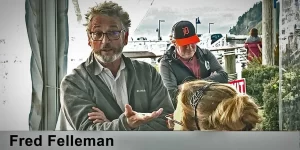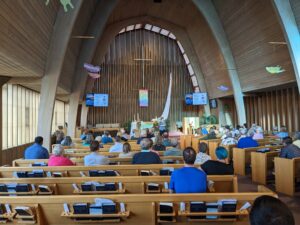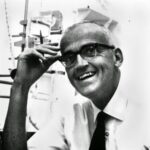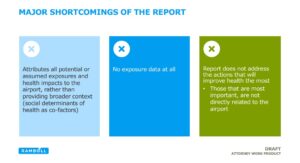The are two very different documents we will refer to back and forth in this article. To (try to) avoid confusion, we will refer to the Community Health and Airport Operations Related Pollution Report as ‘the KCDOH Study’ (because that is how the Port of Seattle referred to it.) We will refer to the summary Powerpoint® presentation the Port Commission received from the Ramboll Group in May of 2021 as ‘the Powerpoint’ because that is what that was.
A Timeline
- In 2019, the State of Washington passed HB 1109. This bill provided the funding of a study led by Dr. Kris Johnson of Seattle/King County Department of Health, called the Community Health and Airport Operations Related Pollution Report. The goal was to provide a current summary of all known health impacts from the airport on the people who live nearby. This is ‘the KCDOH Study’.
- In May of 2021 the Port of Seattle hired the well-known environmental consultancy Ramboll to analyze the report and provide a summary presentation to Port Commissioners. That presentation included a series of Powerpoint® slides. That is ‘the Powerpoint’.
- Quiet Skies Puget Sound member Steve Edmiston requested a copy of that Powerpoint through the Port’s public records request system. The copy he received (which he referred to as ‘the Ramboll Report’ was heavily redacted, being marked as protected attorney/client privilege.
- On September 29, 2022, Mr. Edmiston filed a complaint in King County Superior Court to obtain an unredacted copy of that Powerpoint. Steve Edmiston v. Port of Seattle Complaint for disclosure under Public Records Act.
- The judge denied the request saying that the statute of limitations had expired.
- In March of 2023, Quiet Skies Puget Sound began encouraging as many people as possible to file a similar PRR, assuming that, since these were new requests, they could not be denied for that same reason. Apparently, there was also an element of protest involved. The thought seemed to be that having numerous people making the same request would demonstrate a public demand for transparency from the Port.
 Quiet Skies also held two tent meetings to discuss the controversy, inviting Port Commissioner Felleman to one of them to demand that the Port release the unredacted version of that Powerpoint. Coverage in the Waterland Blog.
Quiet Skies also held two tent meetings to discuss the controversy, inviting Port Commissioner Felleman to one of them to demand that the Port release the unredacted version of that Powerpoint. Coverage in the Waterland Blog. And then on May 11th, QSPS invited the author of the original KCDOH Study, Dr. Kris Johnson, to do a presentation on that KCHDOH Study at a local church in Des Moines.
And then on May 11th, QSPS invited the author of the original KCDOH Study, Dr. Kris Johnson, to do a presentation on that KCHDOH Study at a local church in Des Moines.- Finally, on May 30th, the Port’s Public Records Office released an unredacted version of the Powerpoint to the 40+ people who made that same request.
And after all that, the response from the Quiet Skies community to that unredacted version? Crickets.
Optics…
At first glance, the optics of the situation were, indeed, not great.
Redacted Ramboll Powerpoint…
Unredacted Ramboll Powerpoint.
Without reading the details, it looks terrible. What could the Port be hiding?
However….
Our concern all along was that the public would be totally confused. After all, by the time people saw that highly redacted Ramboll Powerpoint, the original KCDOH Study (which really does matter) was already three years old. During that time (sadly) the original KCDOH Study had not garnered much attention at all. But the ‘Ramboll Report’ (ie. the Powerpoint), was getting all sorts of attention–mainly because of all those bad looking black boxes.
Now that we can see the unredacted copy, here is what we think.
The Ramboll Powerpoint is just a short summary, not a smoking gun. The Port (and the Ramboll Powerpoint) were discussing a freely available document (the KCDOH Study), not talking over some damning internal research like Big Tobacco back in the 1960’s. There was no ‘cover-up’. The Port’s legal department may have over-reacted, but… that’s what lawyers do. Every corporation will want to defend its ability to speak candidly–and in private, even when there is nothing to see.
We’re usually thrilled to see large numbers of the public take collective action–it’s often the only way to get anywhere on these kinds of issues. However, we fear that this campaign to uncover ‘the truth’ took advantage of public anger, only adding to the confusion.
Again, the original KCDOH Study has been public now for three years. We think it would be far more useful to focus activism on that actual Community Health Study than on anything the Port might have to say about it.
Perhaps the most useful activism in the whole kerfuffle was getting members of the public to hear Dr. Johnson speak at that church, because that is what people should be paying attention to. Sadly, her presentation went unrecorded.
However, she gives the same basic presentation frequently and here is a version she gave to the Burien City Council in January 2023. We encourage everyone to watch it because, again, it’s that work that really matters.
It does the job…
That said, reading the Ramboll Powerpoint carefully, the analysis does the job for all sides. Frankly, many scientists are not the best explainers of their own work. The Ramboll Powerpoint is valuable because it is a far more digestible version of the original Study. It correctly summarizes the key issues that both the Port and the community really should confront.
- There are real problems of public health.
- And there are suggestions of other problems that merit investigation.
- However, in many areas, the research simply is not where it needs to be to get to regulatory authority.
- So the Study identifies where more work is needed to get to that place.
- And all sides bear responsibility for not giving researchers the tools to get there.
If anything, the KCDOH Study reads to us likes a researcher’s cry for help. And we should hear that cry and simply give them what they need.
The vicious circle
![]()
- Electeds and industry have been consistently complicit in saying “more research is needed!” Regurgitating existing and incomplete work, then suggesting slow-paced or ‘summary’ programs designed to keep pushing hard evidence far into the future.
- Frustrated residents and activists, rightly say “enough with the studies!” and try to push for immediate relief, which is not what researchers are actually saying.
- And all that impatience does is give pro-aviation stakeholders all the ammunition they need to continue to cycle back to #1.
Rinse and repeat.
The conversation you cannot have
Blaming the Evil Empire feels good. Suing them feels even better. But the track record in any aviation lawsuit has not exactly been paved with gold. Even if one were to win the big one–an action the size of the 1998 Tobacco Settlement–the amount of money that converts into useful programs typically ends up being a fraction of the ginormous award. And worse, the truth is that such actions almost never do the thing that really needs to happen for aviation impacted communities: change the regulations.
What changes environmental law is data; data adequate to achieve a regulatory standard. Gathering the kind of rigorous data that leads to regulation takes years. It never occurs from one-off studies. It instead happens with boring, long term, comprehensive data collection. (eg. the Department of Ecology has spent over $11M on various sensors to monitor Puget Sound every month.)
If we had started years ago, we’d be there by now. We didn’t. There are no shortcuts. So we may as well start now and go all in.
Until now, we’ve done nothing but one-off studies. They are always suggestive, but they are simply never enough to get a regulation passed. And frankly? That is at least partially intentional.
So we should stop complaining and focus on giving researchers the money and commitment to do that.
Because the dirty little secret is that we never give researchers the money they really need to get the answers.
- The FAA will spend tens of millions funding research towards arcane items like better thermal coatings for engines, but only offer a few hundred thousand to scientists trying to understand ultrafine particulates.
- The State of Washington has repeatedly funded expensive summary studies of health impacts (which contain no original research.)
- Airport communities will put “support for Sustainable Aviation Fuels” on their legislative agendas, but also allocate no money for research.
Rarely do we invest in the real work that pushes the ball down the field.
And no researcher complains. In fact, many scientists self-censor; not asking for the equipment they really need. Because to complain is to risk losing funding. Electeds will tout their one-off studies. Or suggest doing multiple studies concerning the same thing (which is a bit like 40 people all requesting the same unredacted Ramboll Powerpoint.)

It’s been known since at least the 1920’s that leaded gas in automobiles is absolutely terrible for human health. But it took decades to get to regulatory authority over gasoline because no one wanted to do the above research. In fact, it took an obsessive person willing to dedicate his life to doing that work because no one else would. Get it?
Every stakeholder knew what the answer was going to be and that is why everyone slow-walked the work.
The similarities to aviation emissions are striking. The health impacts from ultrafine particulates seem more and more alike with each new bit of research. So any threat to the aviation industry will freaks out just as many stakeholders as lead did to communities around the auto industry. Everyone was to blame for the stubborn persistence of leaded gasoline. Mayors and unions and school districts and businesses owners all worried about “jobs and growth” as much as any ‘evil corporation’.
Important note: The world did not end when unleaded gasoline was introduced. And it would not end now if we simply stopped trying to have it both ways with aviation emissions.
Summary
Community activism is a wonderful thing when channeled towards the right goals. Unfortunately, the public’s long standing frustrations make it easy to get off target. We have to stop any misdirections, like constantly using the FAA or the Port, or any other bogeyman, as excuses for complacency. We the public are, in fact, as much to blame as anyone else by being so easily distracted. By campaigning for things that are impossible, rather than asking for the things researchers have needed for fifty years. By not demanding more from our electeds.
Put simply: it is just as easy for forty people to write their legislator in support of the proper air quality monitors, sound insulation and a host of other practical interventions, as it is to make the same public records request.
And we would encourage concerned residents to apply at least as much energy towards practical tasks: giving researchers what they are already asking for. Because at the end of the day, there are no shortcuts. We just need to acknowledge that (for many reasons) we have often focused on the wrong goals, which has added unnecessary years to this fight. And that misdirected effort has been going on now for the past fifty years.

